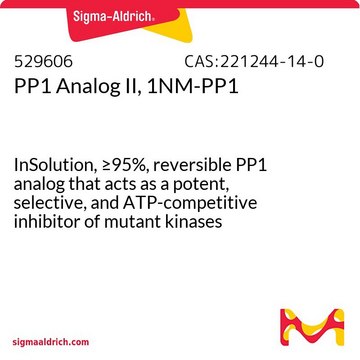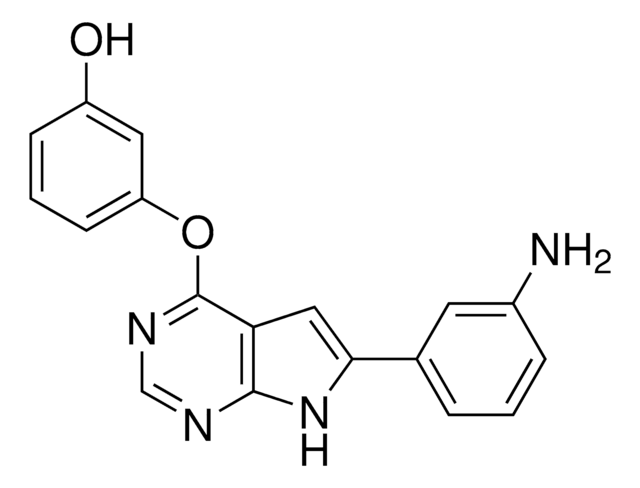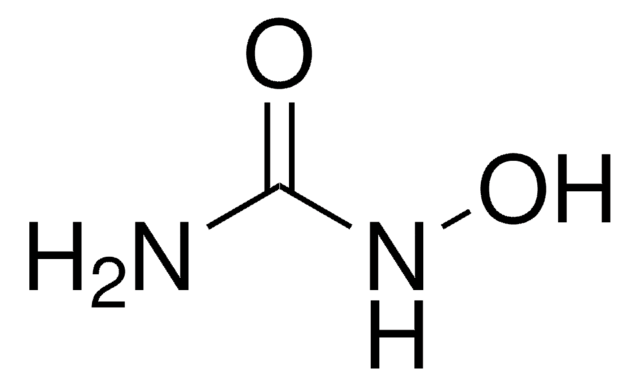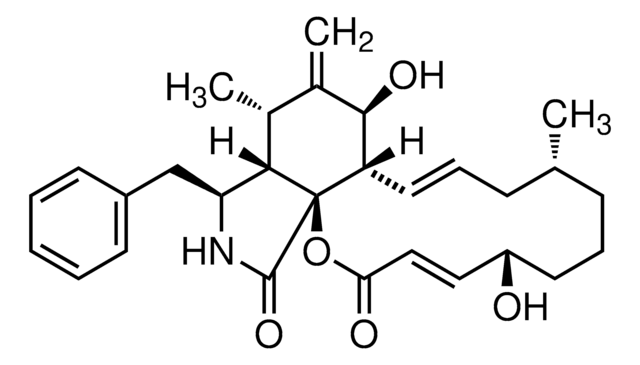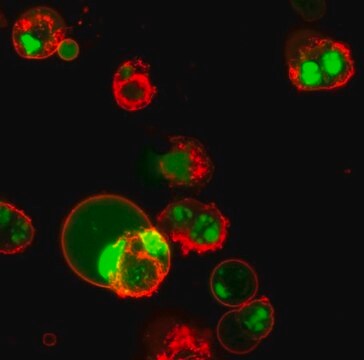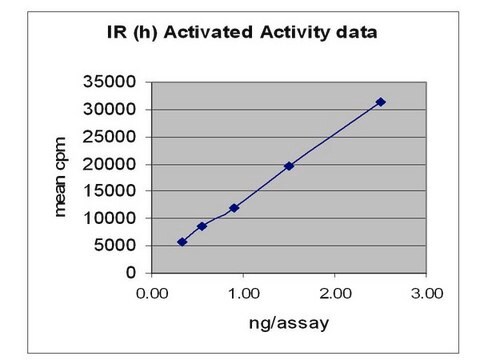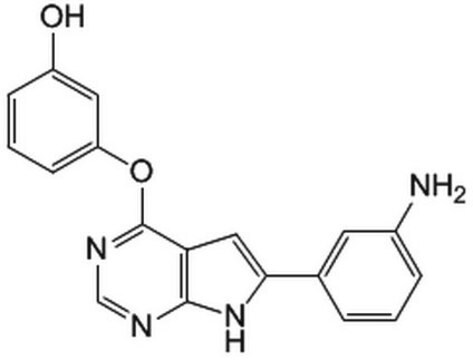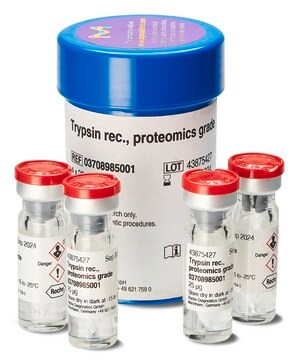217714
Cdk1/2 Inhibitor III
The Cdk1/2 Inhibitor III, also referenced under CAS 443798-55-8, controls the biological activity of Cdk1/2. This small molecule/inhibitor is primarily used for Phosphorylation & Dephosphorylation applications.
Synonim(y):
Cdk1/2 Inhibitor III, 5-Amino-3-((4-(aminosulfonyl)phenyl)amino)-N-(2,6-difluorophenyl)-1H-1,2,4-triazole-1-carbothioamide
About This Item
Polecane produkty
Poziom jakości
Próba
≥95% (HPLC)
Formularz
solid
producent / nazwa handlowa
Calbiochem®
warunki przechowywania
OK to freeze
protect from light
kolor
white
rozpuszczalność
DMSO: 10 mg/mL
THF: soluble
acetone: soluble
Warunki transportu
ambient
temp. przechowywania
2-8°C
InChI
1S/C15H13F2N7O2S2/c16-10-2-1-3-11(17)12(10)21-15(27)24-13(18)22-14(23-24)20-8-4-6-9(7-5-8)28(19,25)26/h1-7H,(H,21,27)(H2,19,25,26)(H3,18,20,22,23)
Klucz InChI
ARIOBGGRZJITQX-UHFFFAOYSA-N
Opis ogólny
Działania biochem./fizjol.
Cdk1/cyclin B, Cdk2/cyclin A
Opakowanie
Ostrzeżenie
Rekonstytucja
Inne uwagi
Informacje prawne
Kod klasy składowania
11 - Combustible Solids
Klasa zagrożenia wodnego (WGK)
WGK 1
Temperatura zapłonu (°F)
Not applicable
Temperatura zapłonu (°C)
Not applicable
Certyfikaty analizy (CoA)
Poszukaj Certyfikaty analizy (CoA), wpisując numer partii/serii produktów. Numery serii i partii można znaleźć na etykiecie produktu po słowach „seria” lub „partia”.
Masz już ten produkt?
Dokumenty związane z niedawno zakupionymi produktami zostały zamieszczone w Bibliotece dokumentów.
Nasz zespół naukowców ma doświadczenie we wszystkich obszarach badań, w tym w naukach przyrodniczych, materiałoznawstwie, syntezie chemicznej, chromatografii, analityce i wielu innych dziedzinach.
Skontaktuj się z zespołem ds. pomocy technicznej